I suppose a case can be made that authors are composed of everything they have ever seen, read, heard, felt, thought, smelled, or eaten. But for authors of a certain age, in looking back, it is difficult to know which specific scraps have been digested and put to use. The Holy Bible is central, of course, to those of us with a British heritage, as is The Book of Common Prayer. A starting point may well – if arbitrarily – be chosen from those books one remembers reading secretly under a bed sheet, since they are the ones which remain longest in the mind.
In writing my series featuring Flavia de Luce, an adolescent girl in the 1950s who channels equal parts Holmesian intelligence and mad-scientist-level chemistry, I draw constantly on books long gone from my hands but never forgotten: childhood Books of Knowledge, bound British annuals, such as The Strand Magazine, and the Encyclopaedia Britannica, 11th edition (marred as it is by the sensationalism of the popular plates.)
Narrowing down my choice to ten has been excruciating. I apologise in advance for the preponderance of morbid matter, particularly those funeral scenes by Mark Twain. Ghoulish childhood reading material does make for ghoulish adults.
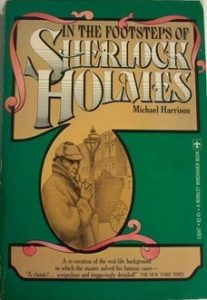
Michael Harrison, In the Footsteps of Sherlock Holmes
This classic work of Sherlockian scholarship brought Victorian London back to life, and taught me how the oil of fact and the water of fiction could be happily and successfully mixed and blended. A letter to the author (concerning the various systems used in numbering London street addresses) led to a long and fascinating correspondence with this prolific man of letters. As a mentor who published some of my early writings, Michael’s encouragement was key to the advent of Flavia. He was always meticulous about acknowledging his sources, and I have attempted over the years to cleave to his example.
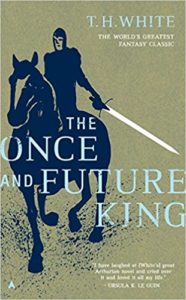
T.H. White, The Once and Future King
White’s literary agent once wrote that White had the power to make grown men cry, and he was dead right. Written mostly in exile, White’s masterpiece was begun in a Buckinghamshire gamekeeper’s shack and completed during WWII while living as a lodger on an Irish farm. While his breadth of knowledge, from hawking to hunting and from amour to armour, fair sucks the breath from the reader’s lungs, it nevertheless, like so much of our great literature, has its roots in a lonely and wounded heart.
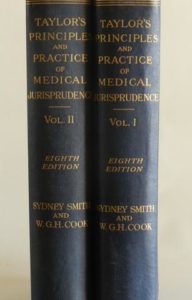
Alfred Swaine Taylor, Taylor’s Principles and Practice of Medical Jurisprudence (various editors, many editions)
Not for the faint of heart. This fat compendium once graced (and perhaps still does) the shelf of every country coroner and general practitioner in England and beyond. Graphic photos of victims of crime and misadventure highlight cool professional commentary. Not quite, but almost, the last word on poisons. As a reviewer in the Medico-Chirurgical Review wrote in 1853, “Any man of sound judgement, who has mastered the contents of Taylor’s “Medical Jurisprudence,” may go into a court of law with the most perfect confidence of being able to acquit himself creditably.” Does that “acquit” suggest a clever killer might profitably bone up on believable alibis in the pages of Taylor? I am privileged to own the set which once belonged to the late W.J. Burley, author of the Inspector Wycliffe mysteries.
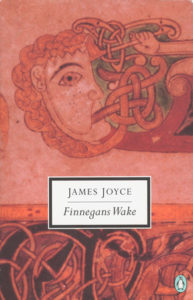
James Joyce, Finnegan’s Wake
This is the way one’s mind works – or, at least, the way mine does. I keep several copies around the house and never travel without a paperback or e-book version in my suitcase. Opening a page at random plunges one immediately back into a conversation interrupted mere moments ago, before the arrival of that pesky person from Porlock. Universes open up and slam shut. Kaleidoscopic incantations permute to infinity, addressed to some god unknown, whom we hope (or fear) is listening.

George Macdonald Fraser, The Flashman Papers
Spanning twelve novels (Flashman, Royal Flash, Flash for Freedom, etc.) Fraser plucks a minor bully from the classic Tom Brown’s Schooldays, and makes him immortal. A vain, pompous liar and craven coward, Flashman worms his way into our hearts like a flatworm. As an unreliable narrator, he is unsurpassed, although the world stages upon which he struts are meticulously researched and brilliantly employed. Who ever thought that the Schleswig Holstein Question could be made not only interesting, but fiercely gripping? And funny? Fraser is one of only two authors who have literally made me fall out of bed with laughter. The other is Garrison Keillor.
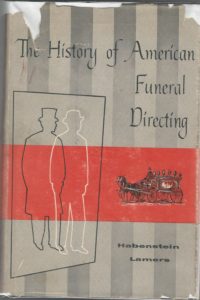
Habenstein & Lamers, The History of American Funeral Directing
When I was still in my teens, our small-town local library kept a copy of this eye-popper safely out of sight on a high shelf. The gift of a local undertaker, it contained illustrations of Victorian mortsafes, sold to guard against the invasion of the body snatchers, as well as expensive gadgets by which the tomb’s inhabitant, had he or she been accidentally buried alive, could, by means of a ring around the finger and a stout cord, ring a bell in the graveyard to signal that immediate digging up was required. To a curious lad, this book was pure catnip. It took a visit by my grandmother (God bless you, Nannie!) to convince the librarian (curse you, Miss Roberts!) that I was not a fledgling vampire, and that I ought to be allowed to check the book out.
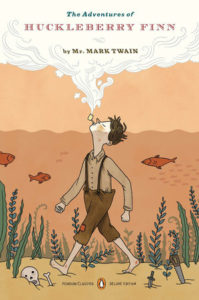
Mark Twain, Adventures of Huckleberry Finn
If I may coin a phrase, narrative voice is all. Huck’s words are at once both bait and reward; a bridge into a vanished world: transformation in spades by everyone but Huck. This is one of the books that was put into my hands during a long siege of childhood illness (another was the abovementioned James Joyce’s Ulysses). My fevered body was transported from a sickbed in southern Ontario and my feet planted firmly in the cooling Mississippi mud, where they have remained, in part, and for better or for worse, for the past three quarters of a century.
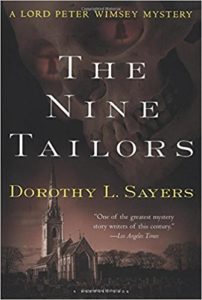
Dorothy L. Sayers, The Nine Tailors
This, too, was a book read at a tender age, and it’s the only novel I’m aware of which opens in a snowbank. Sayers proves herself the equal of Sir Arthur Conan Doyle in the use of weather as setting. Her description of the change-ringing of the church bells (“The bells gave tongue,” et seq) seems to me not just some of the finest writing in detective fiction, but in all of our English language. It’s also an astonishingly good example of clever plotting. Has anyone, anywhere, ever deduced the killer? I somehow doubt it.
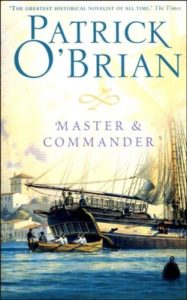
Patrick O’Brian, The Aubrey/Maturin novels
In book after lusciously rendered book (there are more than 20, O fortunate reader!), O’Brian demonstrates again and again the art of delineating family life both home and afloat. Happily, and unexpectedly, influenced by Jane Austen, these seafaring tales examine the closely knitted lives of full-blooded men and women in the early 19th century. One of O’Brian’s many great accomplishments is the way in which the lives of the wives ashore are sometimes every bit as blood-and-thunder as those of their men at sea.
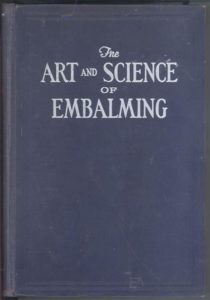
Carl Lewis Barnes, The Art and Science of Embalming
Besides giving the lowdown on what transpires behind the closed doors of every mortuary, author Barnes provides handy photographic illustrations of such essential skills as the correct and incorrect ways of bagging a body for shipment by rail. I found my copy of this essential reference in an antique shop in Pennsylvania, whose owner was reluctant to sell it to me. “Is he an undertaker?” she whispered to my wife. “No,” my other half replied. “He’s just weird.”

















